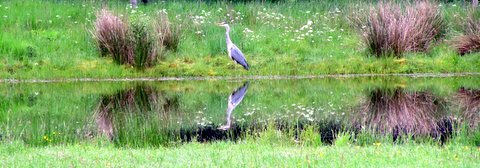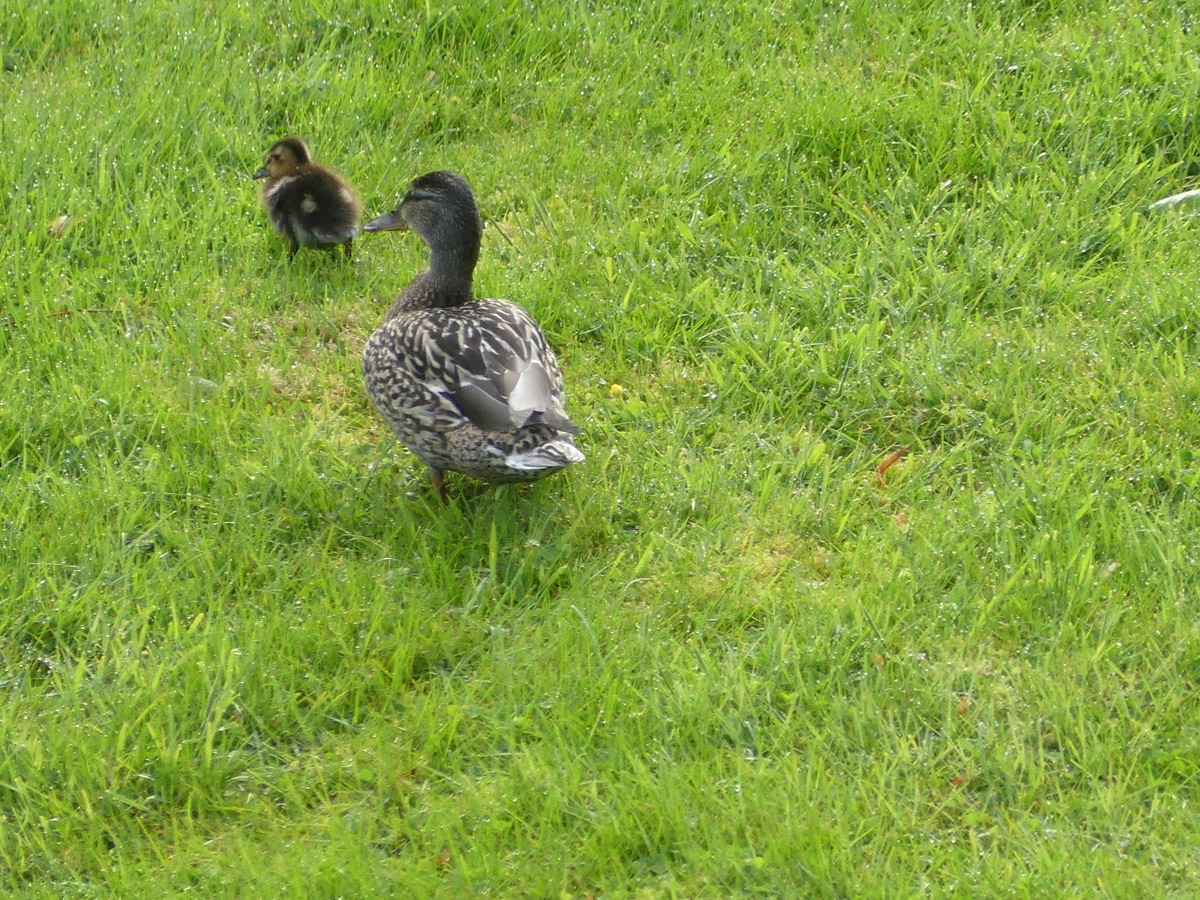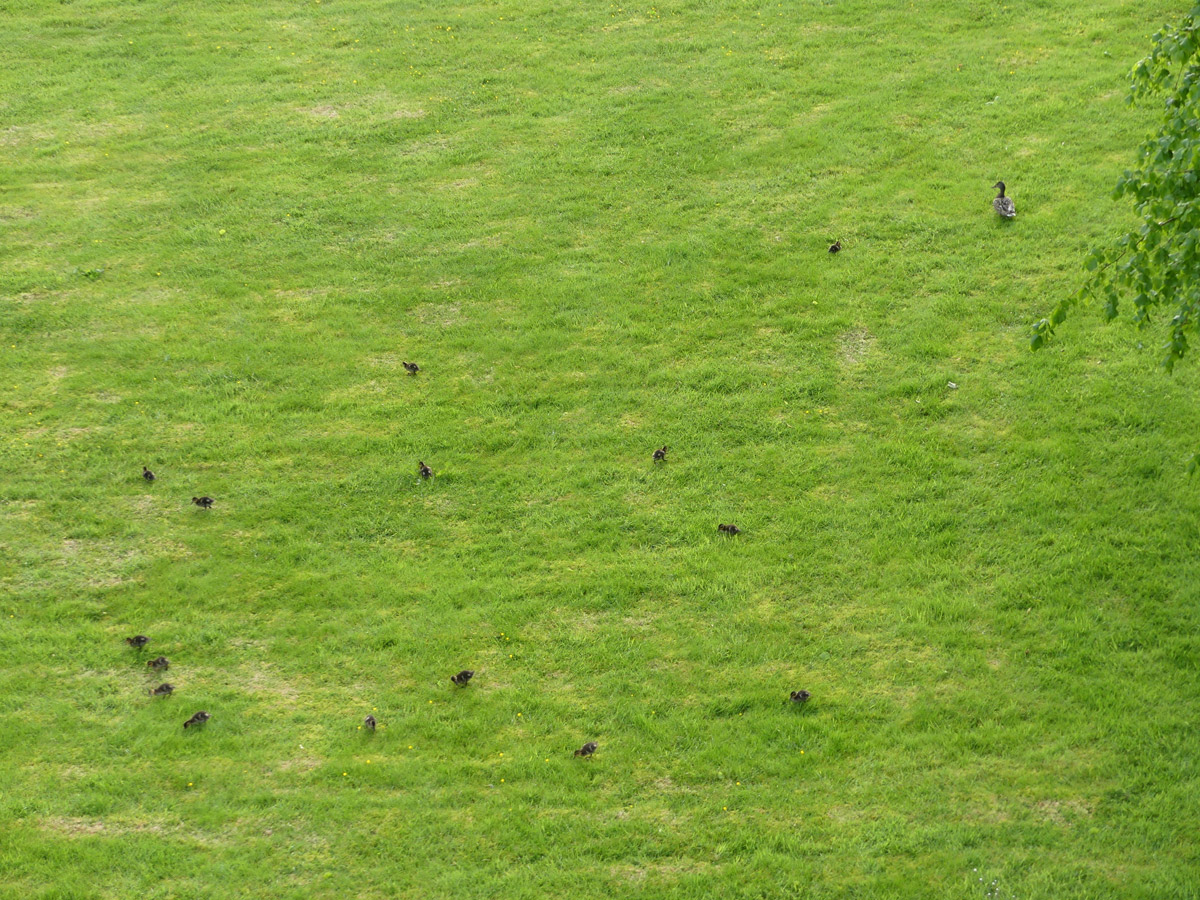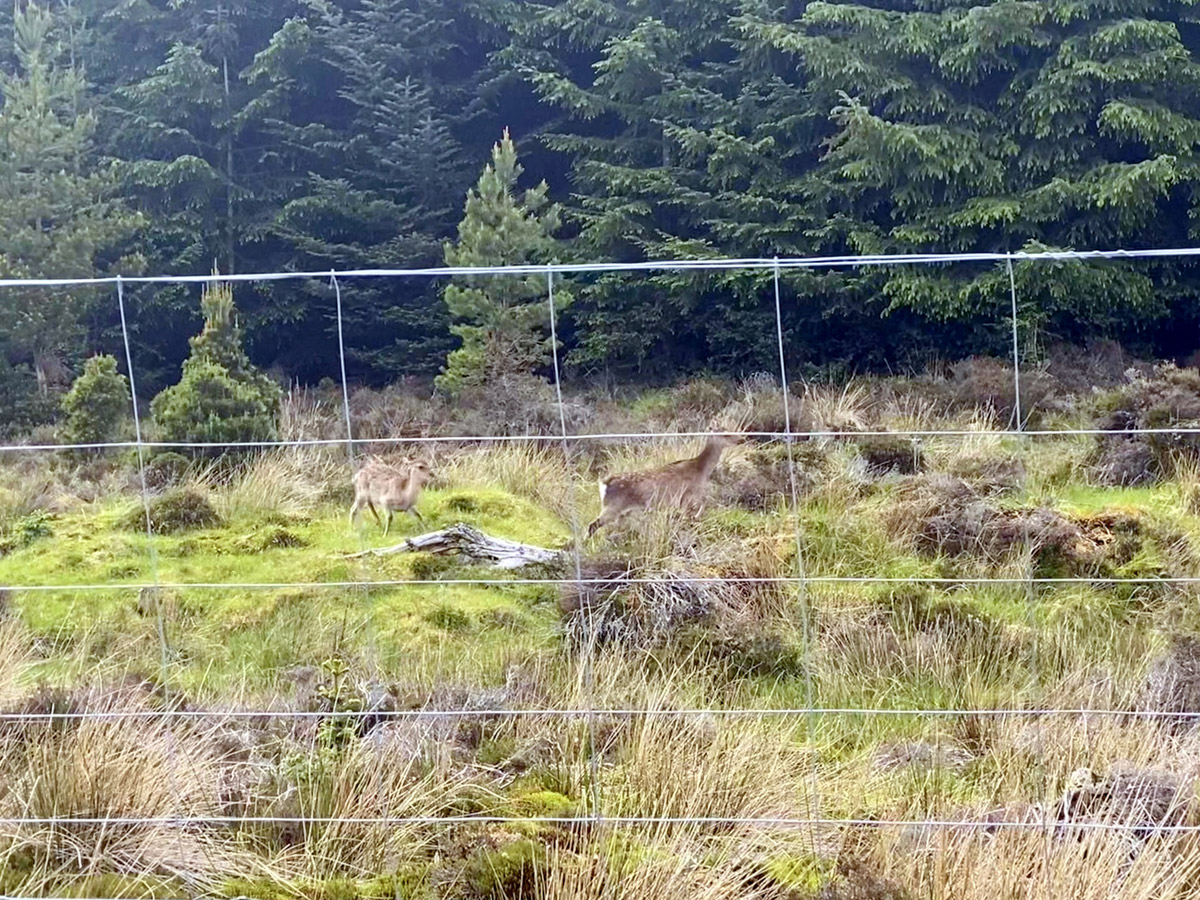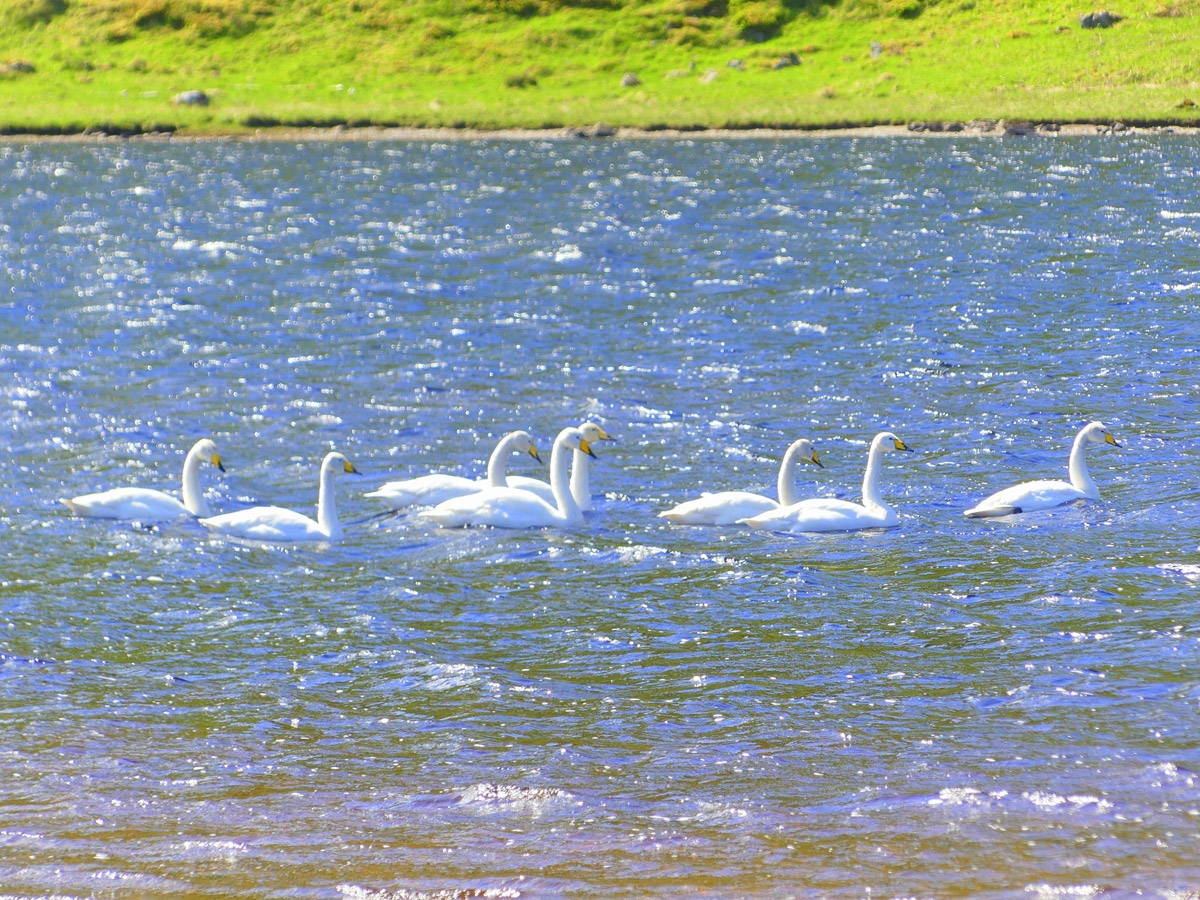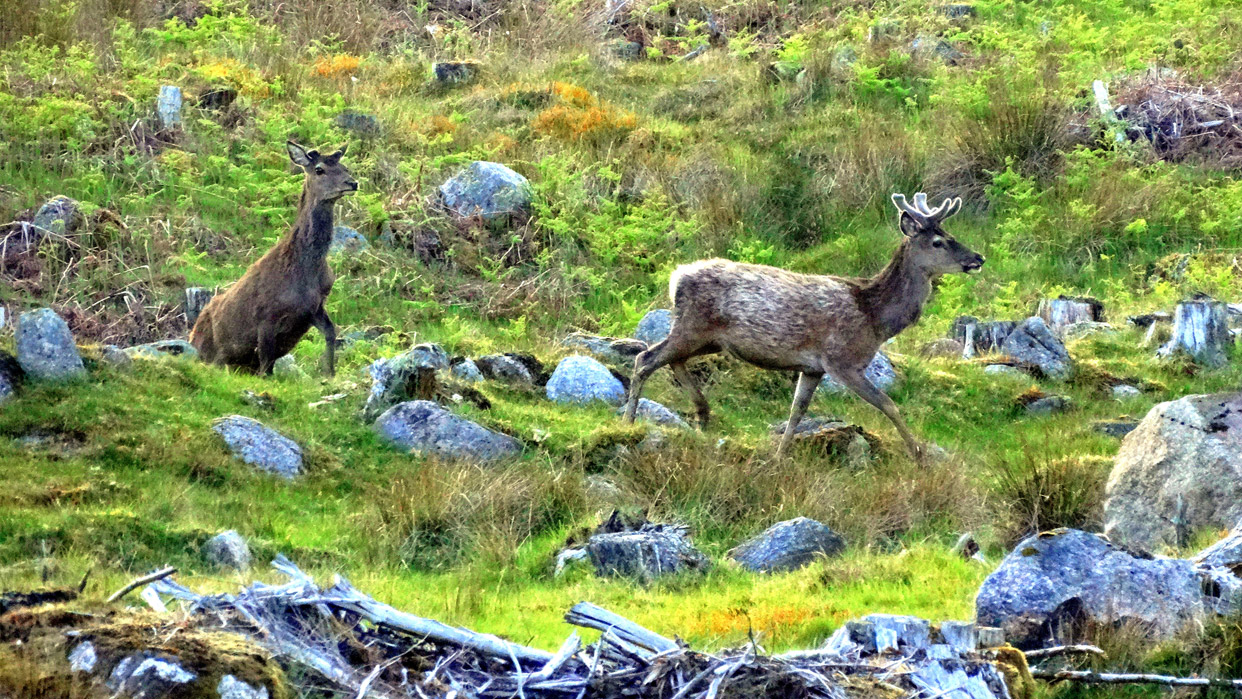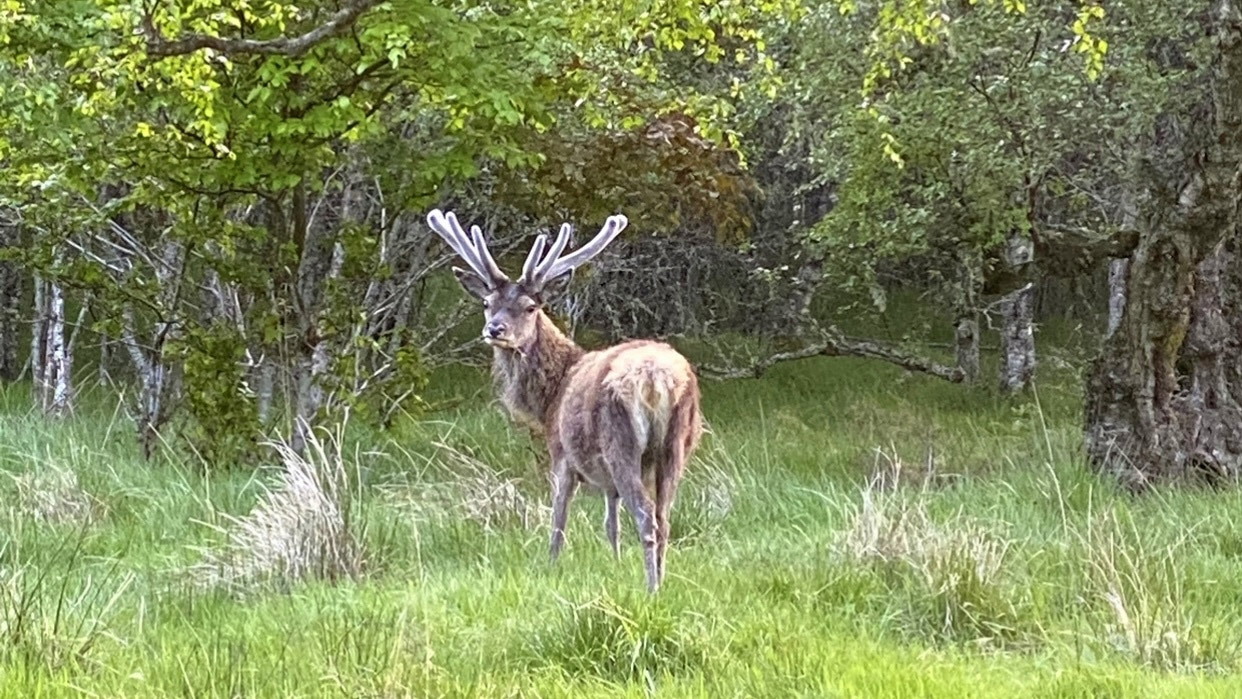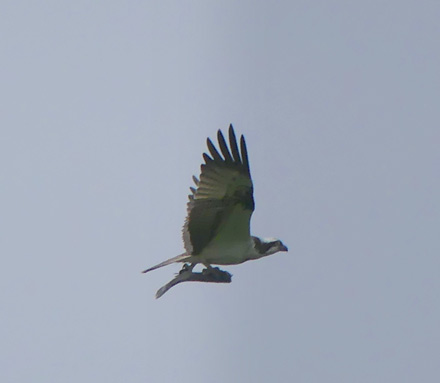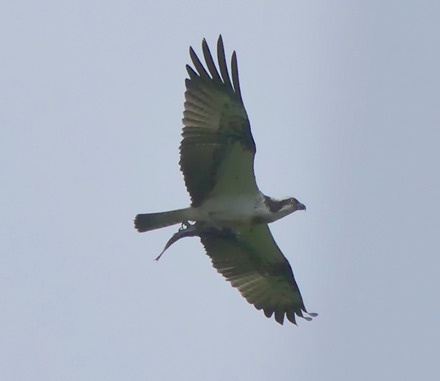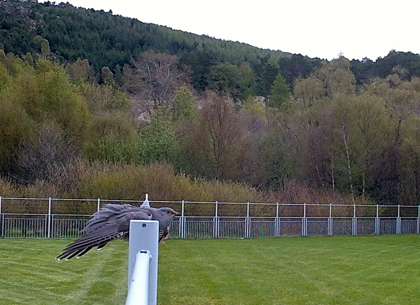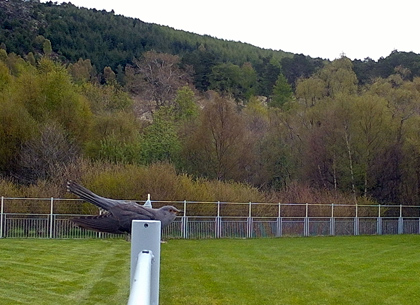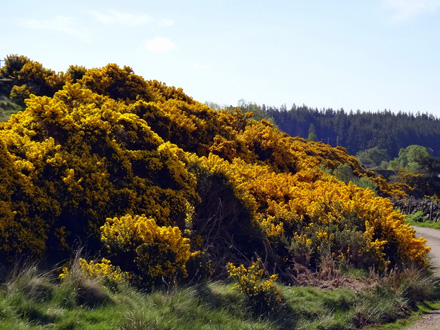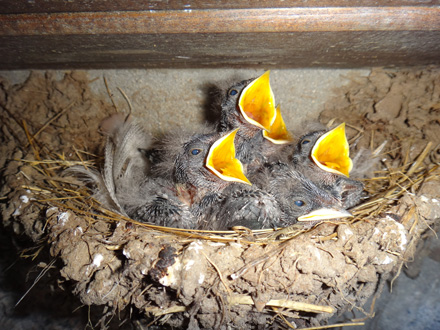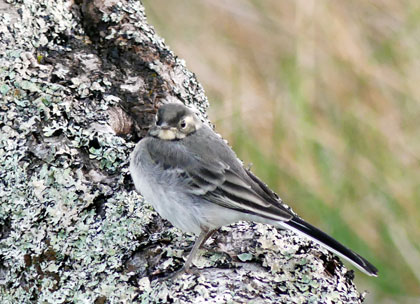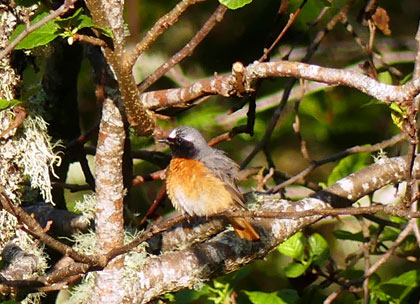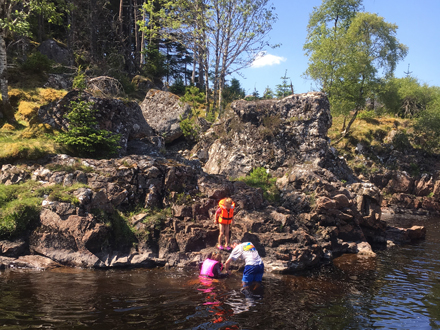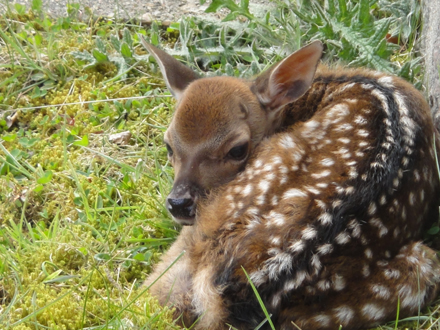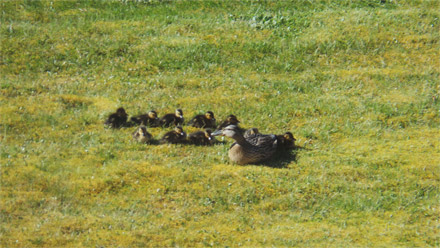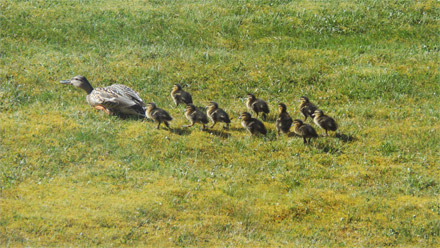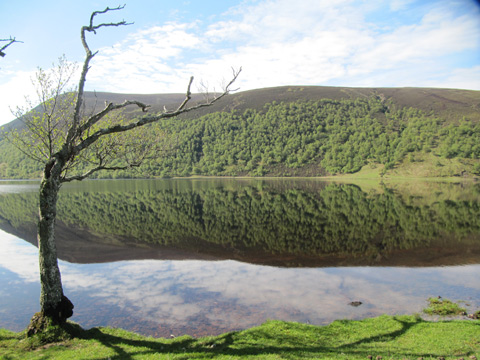This Month at Kildermorie - Archive
Show menuJune
June 2025
The first 'crop' of mallard ducklings to emerge onto open ground are giving their mother a hard time; all 15 seem to have different agendas and she is regularly seen rounding up the strays.
N.B. Though it's easy to get close to wild birds in public parks and gardens where they are habituated to human interaction, those at Kildermorie are truly wild and make a swift departure if approached, thus photography can only be from a respectful distance.
June 2024
Taken from the road, through the deer fence, this photo shows a young sika calf valiantly following its mother across uneven ground on the edge of the forest.
June 2023
Loch Morie is full of surprises this year; as we enter June we have eight Whooper swans forming an impressive flotilla on choppy waters.
On land, the red deer are coming out of winter with shaggy coats, but having shed last year's antlers they are growing new ones with their protective velvet covering.
June 2022
The magnificent and powerful osprey is a fish-eating bird of prey, with a wingspan typically reaching 1.8 metres. After wintering in West Africa, ospreys return to Scotland in the spring to breed and rear their young.
Photos: H Stefankova
June 2021
Throughout spring at Kildermorie, competing cuckoos have filled the air with their distinctive song. These images were caught on a field camera, set up after one cuckoo was seen returning repeatedly to the same fence.
Cuckoos are summer visitors and well-known as brood parasites, laying their eggs in the nests of other birds.
The cuckoo (Cuculus canorus) is on the RSPB 'red' list with a severe population decline in the UK - reported to be at least 50% over the last 25 years.
As we enter the month of June, we are fortunate that these attractive birds are still providing vocal entertainment.
June 2020
Glorious golden gorse lines Strathrusdale en route to Kildermorie. Newborn lambs with their pristine white coats add to the feeling that nature is a great lifter of spirits.
The exceptionally warm weather sees the deer and their calves moving to higher ground to enjoy cooler temperatures. Dominating wildlife activity on the lower ground are the birds, constantly gathering worms and insects to feed their offspring; the demands of ravenous swallow chicks, carefully housed under an overhanging roof, keep the adult birds fully occupied.
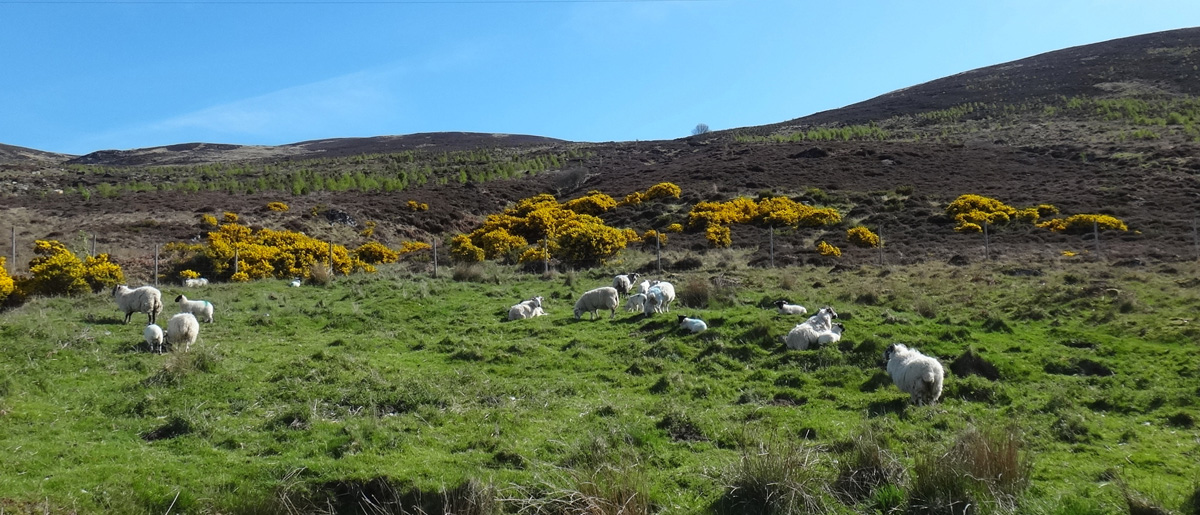
This otter was photographed in the River Glasa just below Meall Mor Lodge. These elusive aquatic hunters are generally active at dawn and dusk in freshwater lochs and rivers.
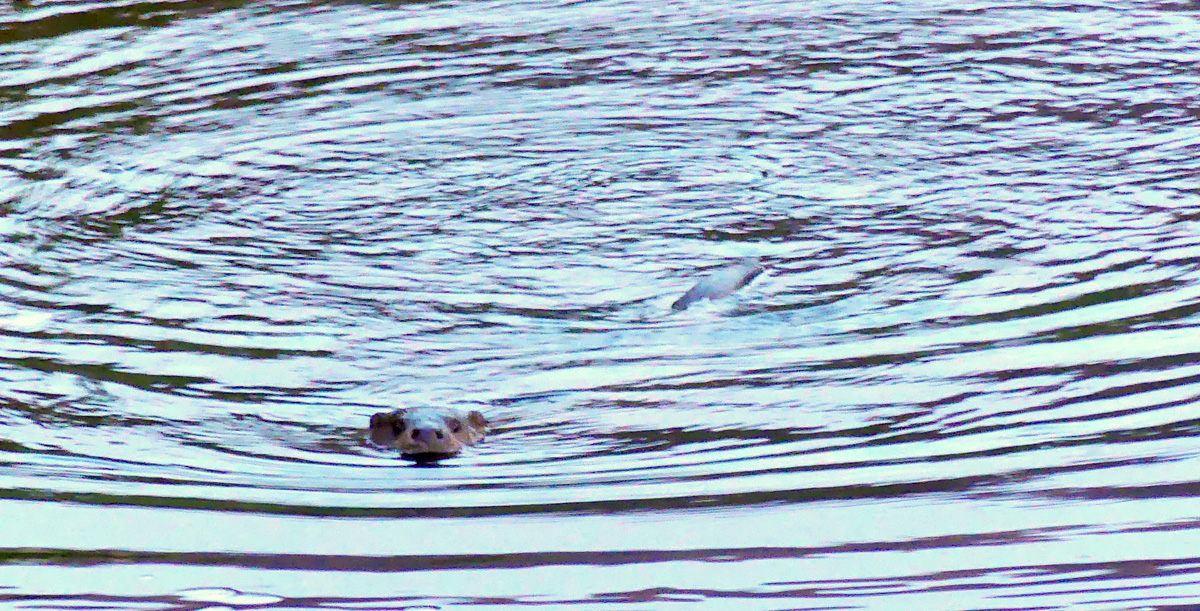 Photo: H Stefankova
Photo: H Stefankova
June 2019
Mid-June offers the perfect opportunity to observe fledgling birds of various species. The juveniles pictured below are the pied wagtail, resident in Britain, and a summer visitor, the redstart.
From late May to early July, newborn calves can be observed taking their first tentative steps, closely chaperoned by their mothers. Sika calves are generally the first to be observed, the sika hind gestation period being slightly shorter than that of the red hind.
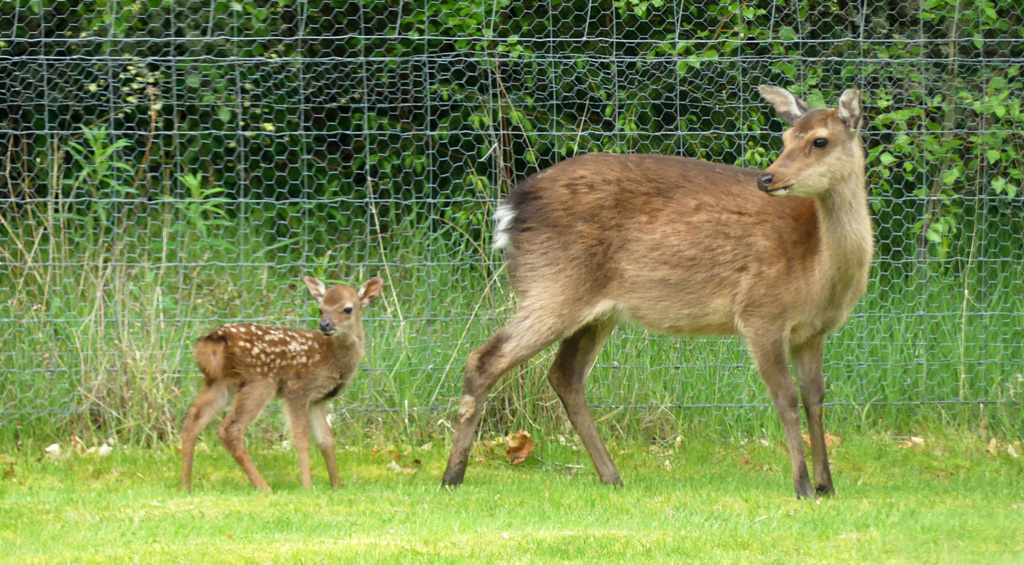 Photo: H Stefankova
Photo: H Stefankova
Also caught on camera near the Estate Office is a great spotted woodpecker, exhibiting its striking plumage and distinctive 'drumming' sound as it clings to the trunk of an old tree.
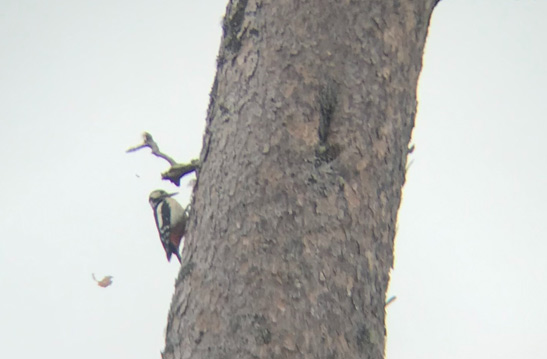 Photo: A I Mackenzie
Photo: A I Mackenzie
June 2018
The glorious weather experienced at Kildermorie during May seems set to continue into June - an ideal time for families with young children to enjoy playing in the rock pools and exploring the estate's natural resources.
It is also the time when newborn calves can be found, curled up against a protective wall, gaining strength before they can follow their mother and join the herd.
June 2016
Care is advisable when moving around the estate this month, especially for those with keen powers of observation. When the hinds have given birth, they sometimes leave their calves against the wall of a building or in some other protected area. For the first few days a hind will just visit to feed her calf, only allowing it to follow her and join the herd when it has developed strength in its legs. It is a privilege to see these vulnerable new-borns.
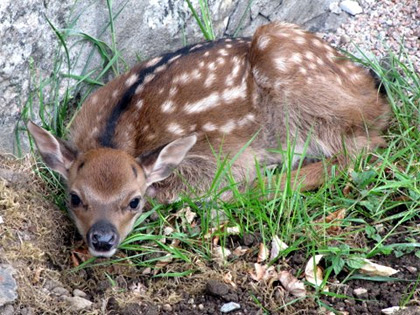
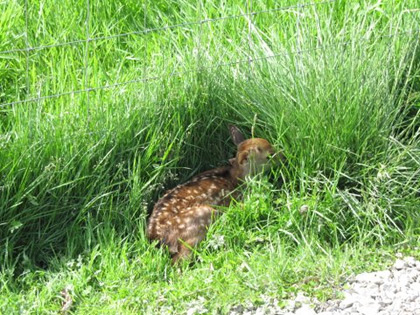
June 2015
The small inland lochs provide prime nursery habitat for the mallard. This year's resident female had ten ducklings, and in their first few days they stayed close to their mother. [see photos below]
However once they became more adventurous the predators moved in, and at the beginning of June just one offspring remains.
June 2014
Early morning tranquillity on Loch Morie.
Observing general wildlife at this time of year is both fascinating and rewarding. An oyster catcher is a ground-nesting bird and normally lays eggs in a 'scrape' in rough or uneven ground and often in the most unsuitable locations such as at the edge of a busy driveway. Very unusually an oyster catcher's eggs have been observed in a tree at the point where the trunk splits into four branches, ten feet above the ground.
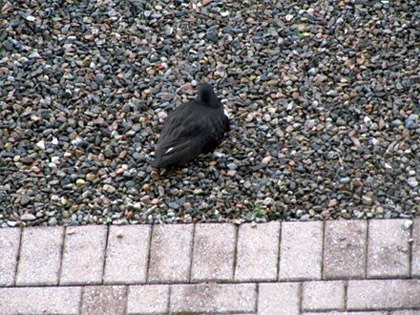
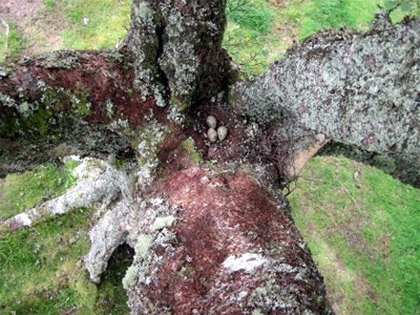 Photo:D Russell
Photo:D Russell
At least five mallard have been successful in hatching and rearing ducklings; the largest group of eleven now take regular exercise on one of the lawns.
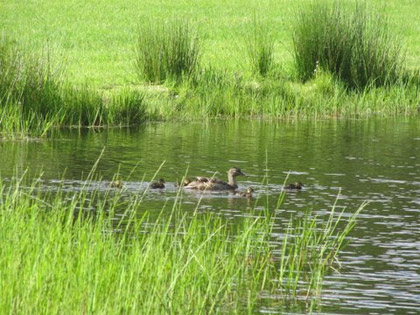
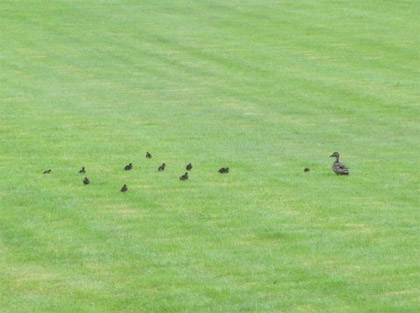
The heron patiently waits in the early mornings at the edge of a small loch.
